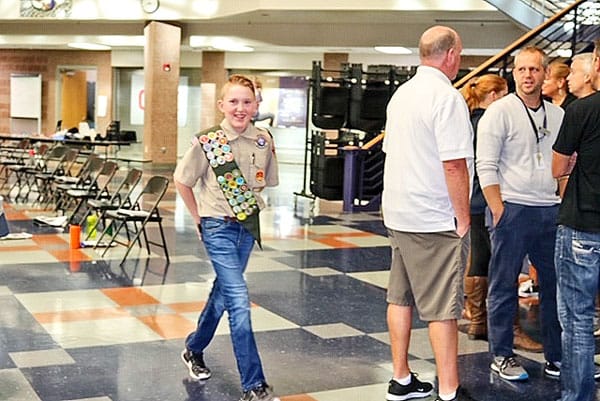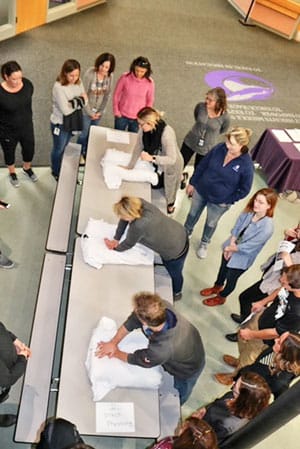RHMS teachers and staff learn to “Stop the Bleed”

Seventh-grader Matthew Hardin coordinated an educational class called “Stop the Bleed” for teachers and staff at RHMS as part of his Eagle Scout project.
Information and photos provided by Michele Hardin
Trauma is the leading cause of death for Americans under the age of 46. The national average for emergency medical services response times is six to nine minutes, but it only takes about five minutes for a person to bleed to death from a major traumatic wound. According to the Department of Homeland Security, there have been more than 250 deaths of students and teachers in our country’s schools since 2000.
“Stop the Bleed” is a national awareness campaign and call-to-action. It is intended to cultivate grassroots efforts that encourage bystanders to become trained, equipped, and empowered to help in a bleeding emergency before professional help arrives, since bystanders are generally the first on scene during a trauma.
Teachers and staff at RHMS practiced emergency medical procedures in an effort to be better prepared in case of a traumatic emergency.
As part of his Eagle Scout service project, Matthew Hardin – seventh-grade Castle Pines resident and Life Scout in Troop 365 – brought a Stop the Bleed course to his teachers and the staff at Rocky Heights Middle School (RHMS) November 6. Matthew believed his project would not only benefit his school and community, but possibly save lives. Eighty-five people attended the course, which was taught by David Hardin, MD FACS. David is Matthew’s father and a local trauma surgeon.
All participants received training and hands-on practice in tourniquet application and wound packing. In addition, participants received a certificate by the American College of Surgeons recognizing their successful completion of the course. With the course concluded, Matthew will now work with the school nurse checking the first aid kits throughout the school to ensure the kits are up to date and update them as needed so they will be ready in case of a traumatic emergency.
To learn more about Stop the Bleed, visit www.bleedingcontrol.org.